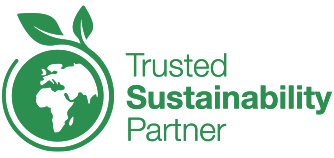Learn More
Invitrogen™ TRIzol™ LS Reagent
TRIzol™ LS Reagent is a complete, ready-to-use reagent optimized for the isolation of high-quality total RNA, or the simultaneous isolation of RNA, DNA, and protein from a variety of liquid samples.
Brand: Invitrogen™ 10296028



View more versions of this product
Description
TRIzol™ LS Reagent is a complete, ready-to-use reagent optimized for the isolation of high-quality total RNA, or the simultaneous isolation of RNA, DNA, and protein from a variety of liquid samples. This monophasic solution of phenol and guanidine isothiocyanate is designed to isolate separate fractions of RNA, DNA, and proteins from liquid samples of human, animal, plant, yeast, bacterial, and viral origin, typically within one hour.
Key features of TRIzol™ LS Reagent:
• Formulated for use with liquid samples such as serum and virus preparations
• Facilitates recovery of RNA, DNA, and protein from a single liquid sample
• Offers excellent lysis capability, even with difficult biological fluids
Reliably purify RNA from multiple sample sources
TRIzol™ LS Reagent is designed for processing a variety of liquid samples of up to 0.25 mL in volume. TRIzol™ LS Reagent differs from the standard TRIzol™ Reagent in concentration, which permits larger samples to be processed. Just as with the standard TRIzol™ Reagent, the integrity of resulting RNA preparations is maintained by the highly effective inhibition of RNase activity during sample homogenization. The simplicity of the TRIzol™ LS Reagent method allows simultaneous processing of a large number of samples. The entire procedure can be completed in 1 hour. Total RNA isolated by TRIzol™ LS Reagent is free of protein and DNA contamination.
Formulated to serve multiple isolations
TRIzol™ LS Reagent allows you to perform sequential precipitation of RNA, DNA, and proteins from a single sample. After homogenizing the sample with TRIzol™ LS Reagent, chloroform is added, and the homogenate is allowed to separate into a clear upper aqueous layer (containing RNA), an interface, and a red lower organic layer (containing the DNA and proteins). RNA is precipitated from the aqueous layer with isopropanol. DNA is precipitated from the aqueous/organic interface with ethanol. Protein is precipitated from the phenol-ethanol layer by isopropanol precipitation. The precipitated RNA, DNA, or protein is washed to remove impurities, and then resuspended for use in downstream applications.
Purified products are ideal for use with a variety of applications
Isolated RNA can be used in real-time quantitative PCR (qPCR), northern blot analysis, dot blot hybridization, poly-(A)+ selection, In vitro translation, RNase protection assays, and molecular cloning. Isolated DNA can be used in PCR, restriction enzyme digestion, and Southern blots. Isolated protein can be used for western blots, recovery of some enzymatic activity, and some immunoprecipitation.
Order Info
Shipping Condition: Room temperature

Specifications
| 200 mL TRIzol LS Reagent; room temperature |
|
| 1 hr. | |
| Liquid Samples (e.g. Serum) | |
| Not High-throughput Compatible (Manual) | |
| 200 mL | |
| 0.25 mL per 0.75 mL of TRIzol™ LS Reagent |
| Organic Extraction | |
| 20 to 600 μL | |
| Total RNA, DNA, Protein | |
| RT-PCR, qPCR, cDNA library construction, NGS, microarray analysis, blot hybridization, Northern/Southern/Western blotting, in vitro translation, nuclease protection assays, nucleic acid labeling, hybridization, enzymatic assays, immunoprecipitation, gel shift assays, 2D gel electrophoresis | |
| Room Temperature | |
| RNA: ≤20 μg per 1 mL blood ≤1.4 μg per 106 cells |
Safety and Handling
- TRIzol LS Reagent
Signal Word
- Danger
Hazard Category
- Acute toxicity Category 3
- LONG-TERM AQUATIC HAZARD Chronic 3
- Serious eye damage/eye irritation Category 1
- Germ cell mutagenicity Category 2
- Skin corrosion/irritation Category 1 B
- Specific target organ toxicity after repeated exposure Category 2
- Specific target organ toxicity Category 3
Hazard Statement
- H301-Toxic if swallowed.
- H311-Toxic in contact with skin.
- H314-Causes severe skin burns and eye damage.
- H331-Toxic if inhaled.
- H335-May cause respiratory irritation.
- H341-Suspected of causing genetic defects.
- H373-May cause damage to organs.
- H412-Harmful to aquatic life with long lasting effects.
Precautionary Statement
- P201-Obtain special instructions before use.
- P261-Avoid breathing dust/fume/gas/mist/vapours/spray.
- P264-Wash hands thoroughly after handling.
- P273-Avoid release to the environment.
- P280-Wear protective gloves/protective clothing/eye protection/face protection.
- P301+P310-IF SWALLOWED: Immediately call a POISON CENTER/doctor /
- P302+P352-IF ON SKIN: Wash with plenty of water/soap.
- P303+P361+P353-IF ON SKIN (or hair): Take off immediately all contaminated clothing. Rinse skin with water/ shower.
- P304+P340-IF INHALED: Remove person to fresh air and keep comfortable for breathing.
- P305+P351+P338-IF IN EYES: Rinse cautiously with water for several minutes. Remove contact lenses, if present and easy to do. Continue rinsing.
- P403+P233-Store in a well-ventilated place. Keep container tightly closed.
- P501b-Dispose of contents/container in accordance with local/regional/national/international regulations.
Supplemental information
- MIXTURE LIST-Contains : Phenol, Thiocyanic acid, Ammonium thiocyanate
Certificates
A lot number is required to show results for certificates. To find your lot number on previous orders use our order status area.
| Lot Number | Certificate Type | Date | Catalog Number |
|---|---|---|---|
| 10083681 | Certificate of Analysis | 31/01/2025 | 10296028 |
| 96737603 | Certificate of Analysis | 31/01/2025 | 10296028 |
| 10083661 | Certificate of Analysis | 31/01/2025 | 10296028 |
| 96737901 | Certificate of Analysis | 29/01/2025 | 10296028 |
| 96737902 | Certificate of Analysis | 29/01/2025 | 10296028 |
Your input is important to us. Please complete this form to provide feedback related to the content on this product.
For Research Use Only. Not for use in diagnostic procedures.
















